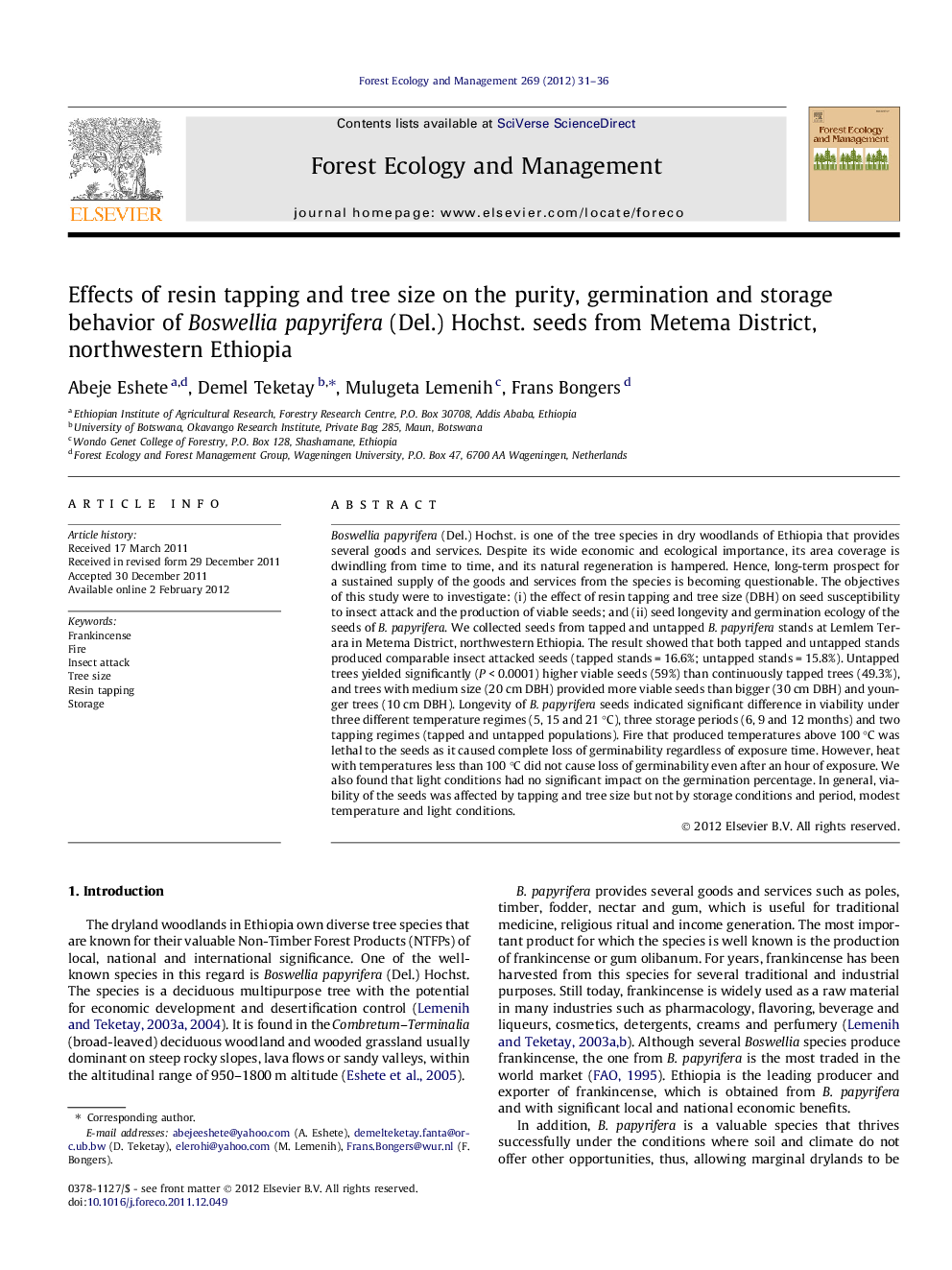| Article ID | Journal | Published Year | Pages | File Type |
|---|---|---|---|---|
| 87439 | Forest Ecology and Management | 2012 | 6 Pages |
Boswellia papyrifera (Del.) Hochst. is one of the tree species in dry woodlands of Ethiopia that provides several goods and services. Despite its wide economic and ecological importance, its area coverage is dwindling from time to time, and its natural regeneration is hampered. Hence, long-term prospect for a sustained supply of the goods and services from the species is becoming questionable. The objectives of this study were to investigate: (i) the effect of resin tapping and tree size (DBH) on seed susceptibility to insect attack and the production of viable seeds; and (ii) seed longevity and germination ecology of the seeds of B. papyrifera. We collected seeds from tapped and untapped B. papyrifera stands at Lemlem Terara in Metema District, northwestern Ethiopia. The result showed that both tapped and untapped stands produced comparable insect attacked seeds (tapped stands = 16.6%; untapped stands = 15.8%). Untapped trees yielded significantly (P < 0.0001) higher viable seeds (59%) than continuously tapped trees (49.3%), and trees with medium size (20 cm DBH) provided more viable seeds than bigger (30 cm DBH) and younger trees (10 cm DBH). Longevity of B. papyrifera seeds indicated significant difference in viability under three different temperature regimes (5, 15 and 21 °C), three storage periods (6, 9 and 12 months) and two tapping regimes (tapped and untapped populations). Fire that produced temperatures above 100 °C was lethal to the seeds as it caused complete loss of germinability regardless of exposure time. However, heat with temperatures less than 100 °C did not cause loss of germinability even after an hour of exposure. We also found that light conditions had no significant impact on the germination percentage. In general, viability of the seeds was affected by tapping and tree size but not by storage conditions and period, modest temperature and light conditions.
► Current tapping contributes to loss of seed viability, increased susceptibility to insect attack and lower seed longevity. ► Trees with larger diameters were more susceptible to effect of tapping. ► Seeds can be stored for at least one year with no loss in germination capacity. ► Fire generating more than 100 °C can have lethal effects on seeds.
